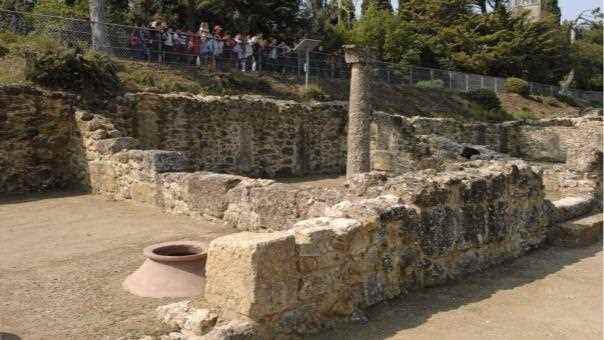The oppidum, closed for two years for work, allows you to discover how Celts, Iberians, Greeks, Orientals, Etruscans and Romans coexisted for eight centuries.
The oppidum of Ensérune, fortified city near Béziers (Hérault) founded by the Celts in the 6the century before our era, reopened its doors to the public after two years of work. Visitors will be able to discover its rich archaeological collections in a museum space that has been completely brought up to date.
Imagined by the architect-scenographer Marion Lyonnet, the new immersive route of the museum, which belongs to the Center des monuments nationaux, allows you to evolve gently in 800 years of history, since the city, Romanized during the Gallic Wars, has collapsed two centuries later to fall into oblivion for two millennia.
“It is undoubtedly lucky for us, since unlike the cities of Narbonne or Béziers, which supplanted it, Ensérune was not crushed by a medieval then modern city, which made it possible to discover vestiges in an exceptional state, explains Lionel Izac, site administrator for the Center des monuments nationaux.
The Tuscan-style villa built in 1914 at the highest point of the Ensérune plateau by the Maux family, jewelers from Béziers, was bought in the 1920s by the State, which made it one of the first archaeological museums on site in France. It is this building, which for a long time no longer met the expectations of the public, that can be visited again. Expanded and refurbished, it is reopening after two years of work that cost 7.5 million euros.
Before entering the coolness of its four rooms, on two floors, visitors can stroll to the end of the plateau, where archaeologists have discovered hundreds of tombs lined with swords, shields and all the utensils and victuals that the deceased took with him to the afterlife. Overlooking a plain where vines and olive trees grow today, the two-hectare site bathed in the Mediterranean sun, located between the Aude and Orb rivers, at the foot of the last foothills of the Massif Central, took on an Iron Age strategic and commercial role, at the crossroads of Celtic and Iberian civilisations.
Then came the Greeks, who had founded the city of Agde a stone’s throw away, followed by the Etruscans and the Romans, who all occupied this narrow plateau where the city gradually developed for about eight centuries.
Started in the first years of the XXe century, excavations had unearthed enigmatic Gallic statuettes, finely decorated Greek vases, heavy wine amphorae imported from Rhodes, Roman busts, as well as thousands of objects, sometimes of great refinement, such as this adornment of pearls from Egypt.
